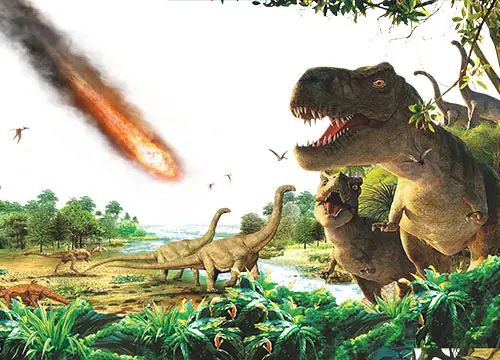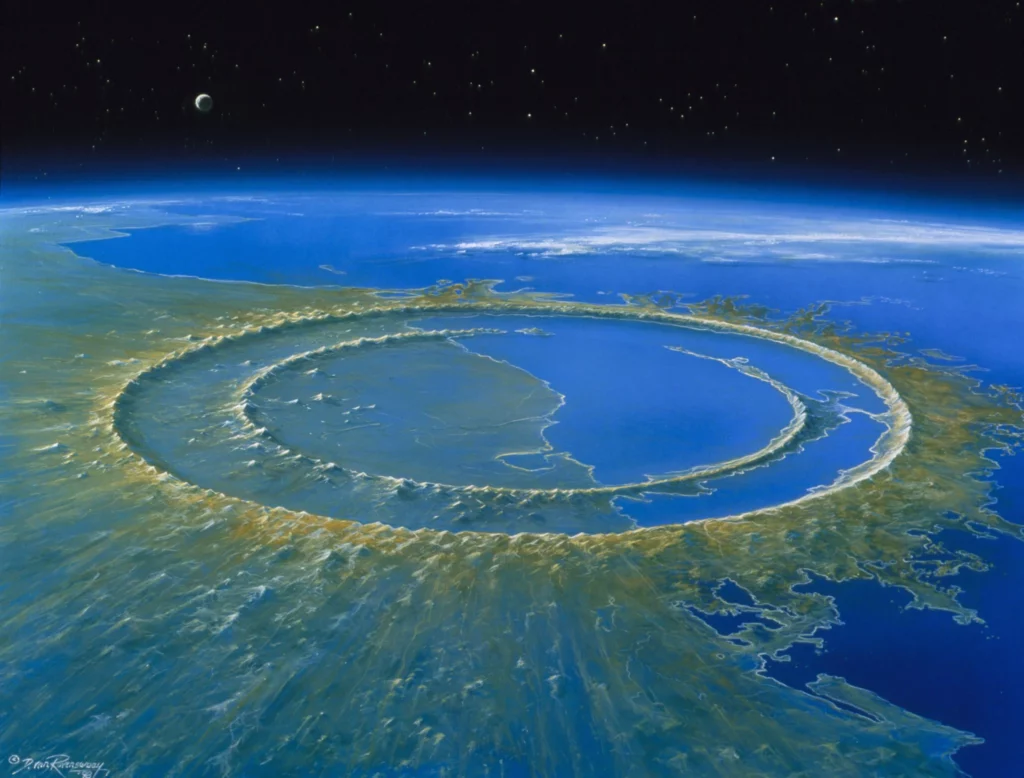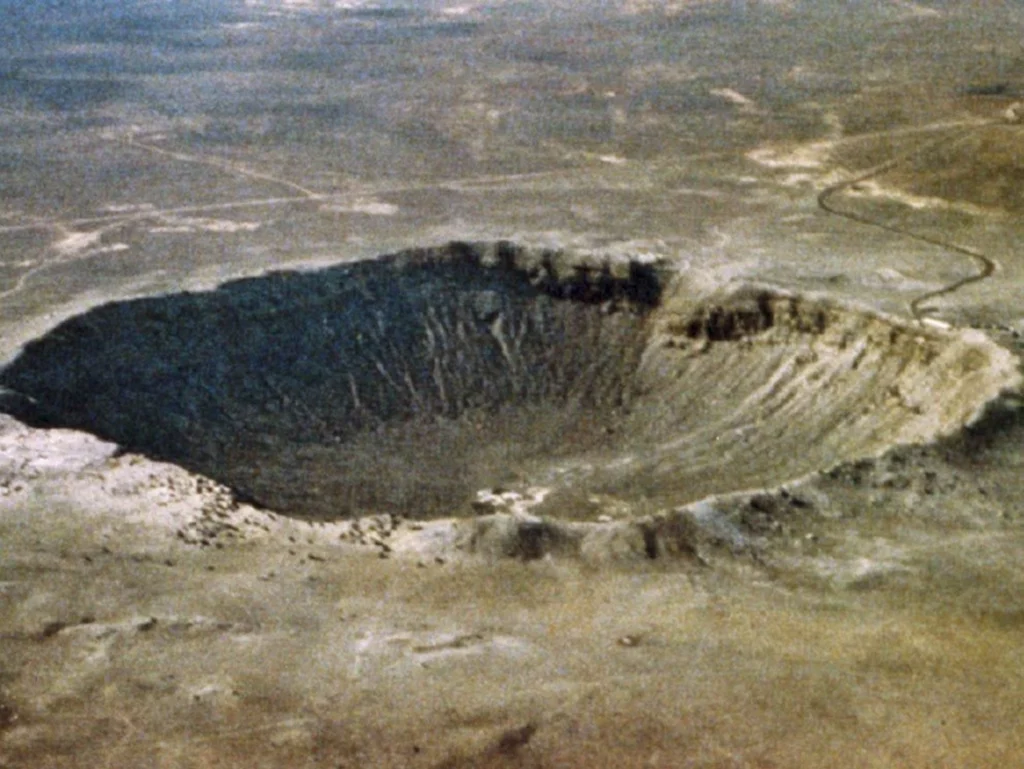Where did the meteor that killed the Dinosaurs land ?

As a paleontologist, I am often asked about the location of the meteor that caused the extinction of the dinosaurs. The event, which occurred about 66 million years ago, is one of the most significant events in Earth’s history, marking the end of the Mesozoic Era and the beginning of the Cenozoic Era. In this blog post, we will explore the location and characteristics of the crater caused by the meteor impact.

The Chicxulub Crater:
The meteor that caused the extinction of the dinosaurs landed in what is now known as the Yucatan Peninsula in Mexico. The impact site is known as the Chicxulub crater and is estimated to be about 180 kilometers (112 miles) in diameter, making it one of the largest known impact craters on Earth.
The discovery of the Chicxulub crater is a fascinating story of scientific inquiry and collaboration. In the early 1980s, geophysicists from Mexico and the United States began to notice an anomalous structure in the rock formations beneath the Yucatan Peninsula. The structure was a circular depression that appeared to be a massive impact crater.
In the years that followed, researchers from around the world worked together to study the Chicxulub crater and determine its age and characteristics. The crater was found to be about 66 million years old, which coincides with the time of the extinction of the dinosaurs and many other species.

Characteristics of the Chicxulub Crater:
The Chicxulub crater is a complex structure that provides valuable insights into the effects of large meteor impacts on Earth. The impact created a shockwave that caused earthquakes and volcanic eruptions, and a vast amount of dust and debris were thrown into the atmosphere, blocking out the sun’s light and causing a global cooling effect.
The crater is characterized by a central peak that rises above the crater floor and a ring of peaks that surrounds the central peak. These peaks are believed to have formed as a result of the rebound of the Earth’s crust after the impact.
The Chicxulub crater has been extensively studied by geologists and paleontologists, and it provides important insights into the impact of large meteor strikes on Earth’s geology, climate, and ecosystems.
Conclusion:
The location of the meteor that killed the dinosaurs, now known as the Chicxulub crater, is a crucial piece of Earth’s history. The impact of the meteor triggered a chain reaction of events that led to the extinction of the dinosaurs and many other species. The discovery of the Chicxulub crater is a testament to the ingenuity and collaboration of scientists from around the world, and it continues to provide valuable insights into the effects of large meteor strikes on Earth.
